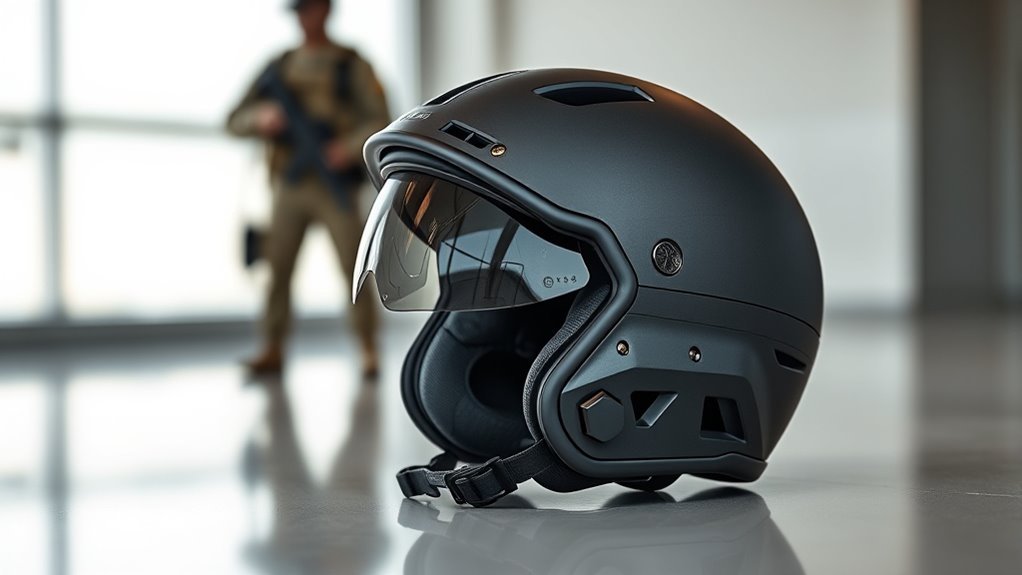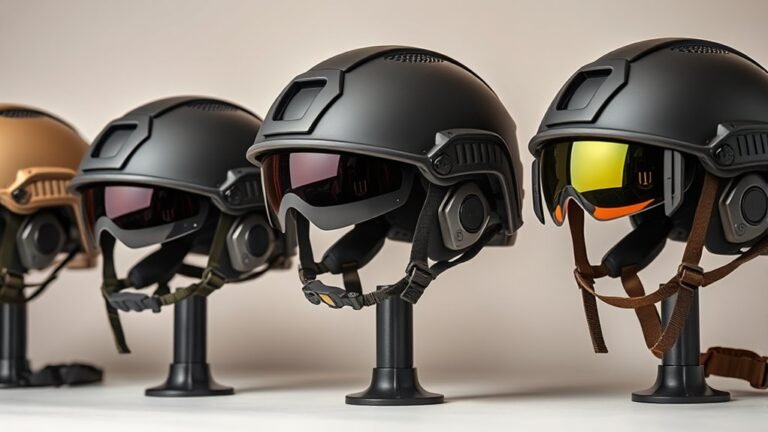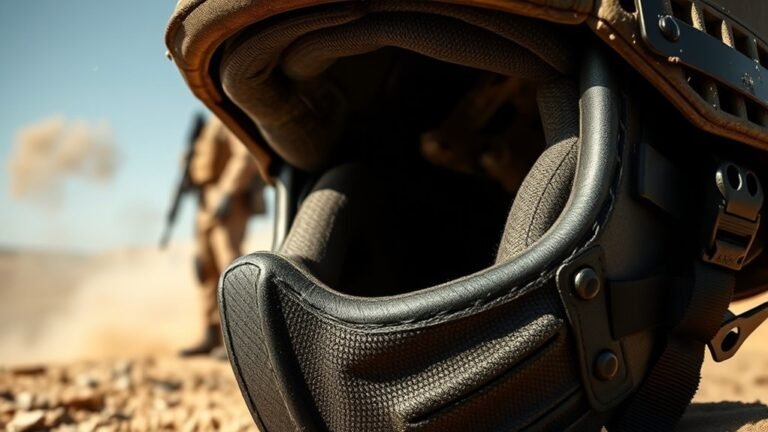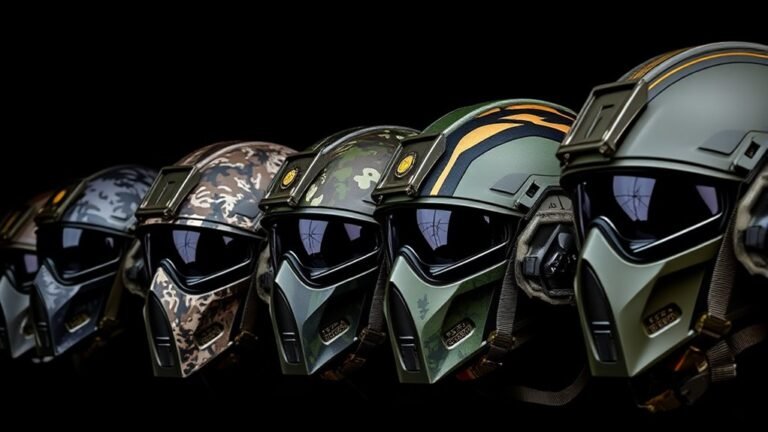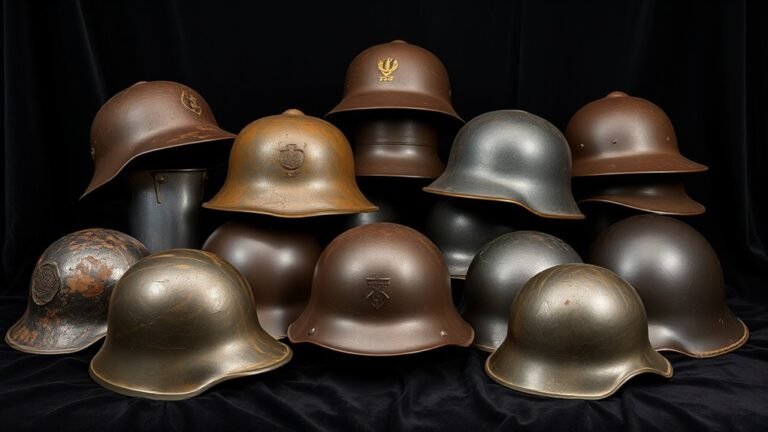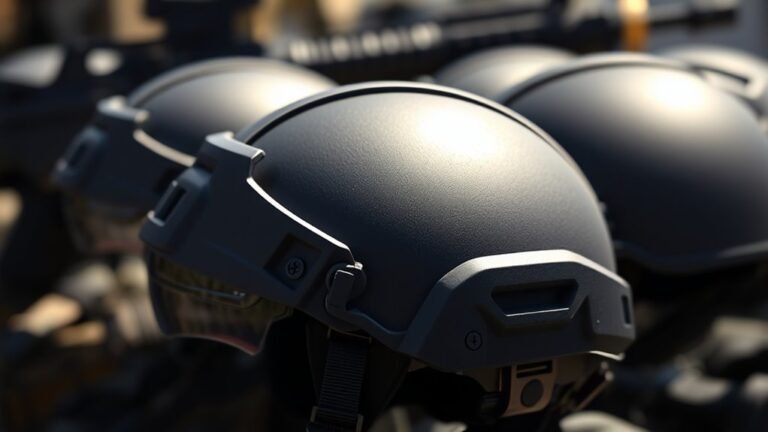Military Helmets: Advances in Protection Technology
Military helmets have undergone significant advancements in protection technology. Modern designs combine lightweight Kevlar composites with innovative ergonomic features to enhance comfort and mobility. Enhanced impact resistance systems effectively absorb shock, reducing the risk of traumatic brain injuries. Additionally, technology such as smart sensors and adaptive fit systems improves functionality and situational awareness. These developments guarantee soldiers are equipped for dynamic environments. You’ll discover even more exciting trends that are shaping the future of helmet protection.
Evolution of Military Helmet Design
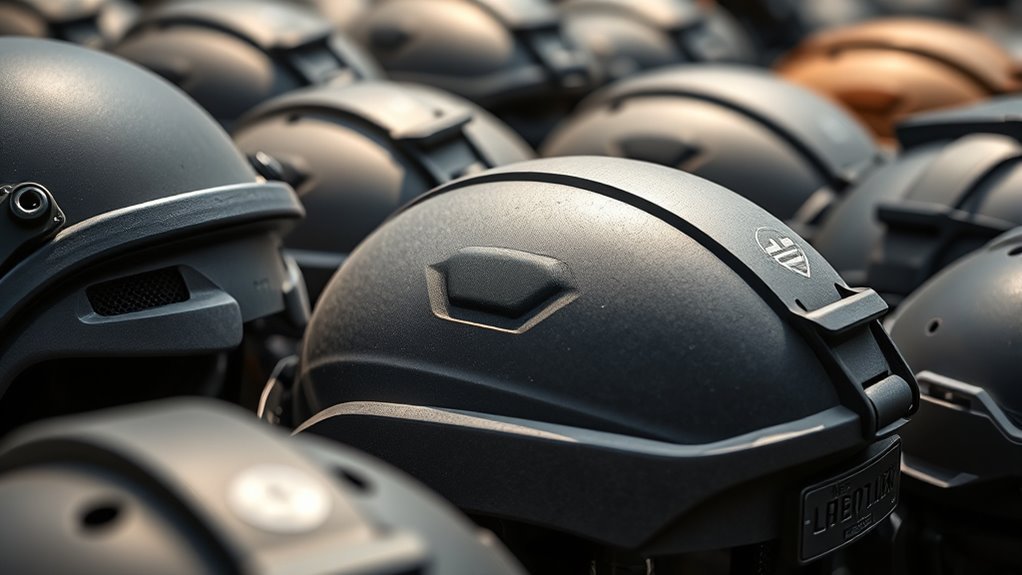
As military needs evolved, so too did the design of helmets, reflecting advancements in materials and technology. Historical designs often prioritized basic protection, but modern iterations emphasize functionality and comfort. You’ll notice that ergonomic improvements have revolutionized helmet fit and usability, allowing for extended wear without discomfort. Innovations in shape and padding have enhanced soldier mobility and awareness, critical for operational effectiveness. Additionally, designs now incorporate features that accommodate communication devices and visors, adapting to the dynamic battlefield environment. Each evolution not only focuses on safety but also aligns with the individual soldier’s need for freedom of movement and cognitive function. By understanding these historical designs and ergonomic advancements, you can appreciate the complexity involved in helmet development for modern military applications.
Materials Used in Modern Helmets
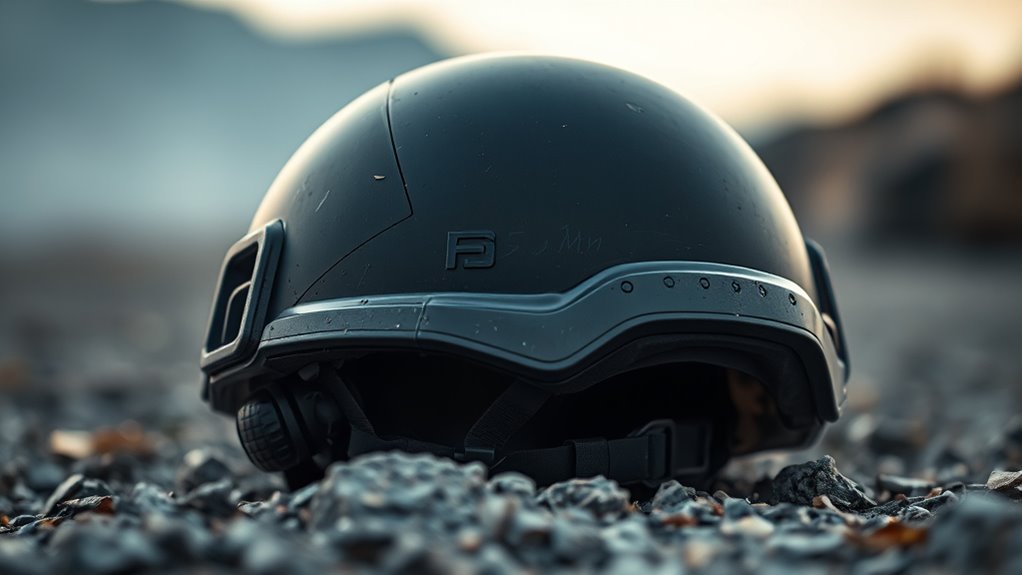
While the evolution of military helmets has markedly improved protection and functionality, the materials used in their construction play an essential role in these advancements. Modern helmets often utilize kevlar composites, which combine strength and lightweight properties, greatly enhancing wearability without compromising safety. These composites provide excellent resistance to impact and penetration, which is vital in combat situations. Additionally, ballistic nylon is frequently integrated for its durability and flexibility, allowing for effective shock absorption and comfort. This combination of materials guarantees that you’re equipped with a helmet that can withstand harsh conditions while offering the mobility needed to navigate complex environments. As technology progresses, the integration of advanced materials continues to redefine the standards of protection in military applications.
Enhanced Impact Resistance Features
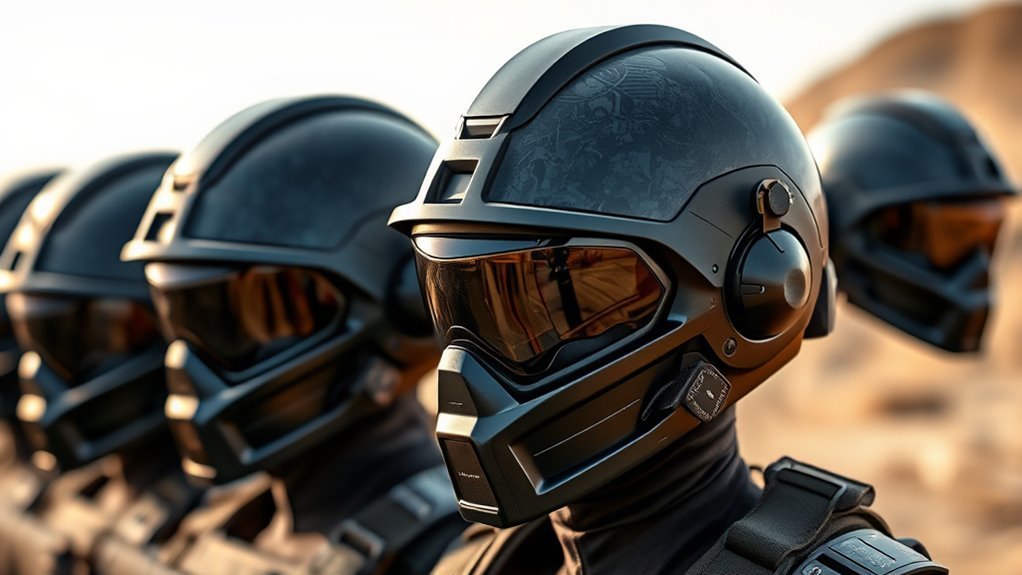
The advancements in materials have paved the way for enhanced impact resistance features in modern military helmets. These innovations focus on superior impact absorption and shock dispersion, vital for protecting soldiers in high-risk environments. By utilizing advanced composites and multi-layer designs, helmets can effectively dissipate energy from impacts, reducing the risk of traumatic brain injuries. You’ll find that these features are engineered to not only withstand direct hits but also to manage secondary impacts that may occur during combat scenarios. As a result, modern helmets provide a significant enhancement in safety, allowing you to operate with greater confidence. This combination of technology and material science guarantees that your headgear is not just protective but also lightweight and comfortable for extended wear.
The Role of Technology in Helmet Functionality
Advancements in technology greatly enhance helmet functionality, ensuring that modern military headgear meets the rigorous demands of combat. Smart sensors embedded within helmets now provide real-time data, monitoring essential signs and environmental conditions. This data can improve situational awareness and enhance overall safety for soldiers. Additionally, the adaptive fit technology allows helmets to conform to various head shapes and sizes, ensuring maximum comfort and protection during extended wear.
| Feature | Description |
|---|---|
| Smart Sensors | Monitor essential signs and environment |
| Adaptive Fit | Adjusts to individual head shapes |
| Weight Distribution | Evenly distributes the weight across the head |
| Noise Reduction | Minimizes external sounds for better focus |
| Impact Resistance | Enhanced materials to absorb shock |
Future Trends in Helmet Protection Technology
As military operations evolve, so too must the technology that protects personnel in the field. Future trends in helmet protection technology are leaning toward smart helmets equipped with adaptive systems. These helmets will integrate advanced sensors capable of monitoring environmental conditions and soldier health in real-time, enhancing situational awareness. You’ll find that these systems can instantly relay critical data, allowing for informed decision-making during combat. Additionally, materials used in helmet construction are expected to become lighter yet stronger, providing better ballistic protection without sacrificing mobility. This evolution aims to guarantee that you, as a soldier, receive the highest level of safety while maintaining the agility necessary for dynamic combat environments. The future of helmet technology is promising and crucial for operational effectiveness.
Frequently Asked Questions
How Do Military Helmets Compare to Civilian Helmets in Protection?
Military helmets typically offer superior protection compared to civilian helmets due to their advanced materials and design. They’re often made from high-performance composites that enhance impact resistance, effectively absorbing shocks from projectiles. While civilian helmets prioritize comfort and general safety, military models are engineered for extreme conditions and threats. This increased durability and protection level reflects the rigorous demands placed on soldiers, ensuring they’re shielded in high-stakes environments where every ounce of safety counts.
What Is the Average Lifespan of a Military Helmet?
The average lifespan of a military helmet is typically around 5 to 10 years, depending on factors like helmet material durability and exposure to harsh conditions. Regular inspections are essential, as helmet obsolescence factors—such as wear, impact damage, and advancements in technology—can greatly affect performance. You should replace your helmet if it shows signs of degradation, ensuring ideal protection and maintaining readiness for any situation you face while serving.
Are Military Helmets Customizable for Individual Soldiers?
Absolutely, military helmets can be customized to suit individual soldiers. Just as a tailor crafts a suit, helmet personalization allows for adjustments based on soldier preferences like fit, weight, and added attachments. This customization not only enhances comfort but also guarantees that each soldier feels a sense of ownership and readiness. As technology advances, these helmets evolve, blending protection with personal expression, ultimately fostering a deeper connection between the soldier and their gear.
How Do Helmets Affect Soldier Mobility and Comfort?
Helmets can greatly impact your mobility and comfort. Advanced helmet design focuses on lightweight materials and streamlined shapes, enhancing mobility without compromising protection. Features like adjustable padding improve fit, allowing for greater comfort during long missions. The integration of ventilation systems can also reduce heat buildup, further enhancing your overall performance. Ultimately, a well-designed helmet balances safety with mobility enhancement, ensuring you remain agile while effectively protecting your head in various environments.
What Are the Maintenance Requirements for Military Helmets?
Maintaining military helmets involves regular helmet care and strict adherence to inspection protocols. You should routinely check for cracks, dents, or any signs of wear that could compromise safety. Cleaning the exterior with mild soap, avoiding harsh chemicals, is essential for longevity. Additionally, make sure the interior padding is intact and free from moisture. Following these guidelines not only extends the helmet’s lifespan but also guarantees the best protection during critical missions.
